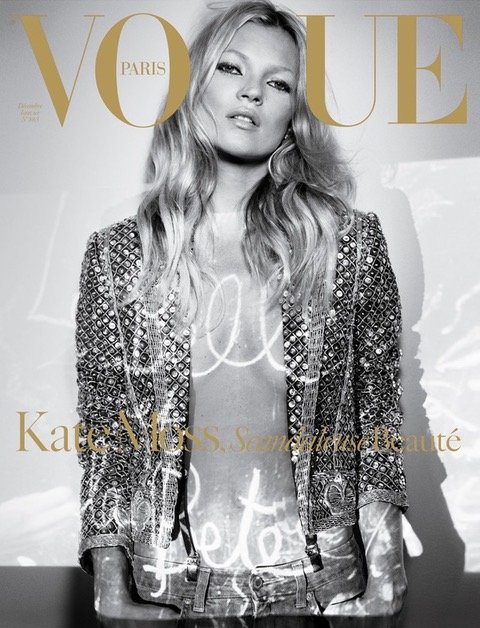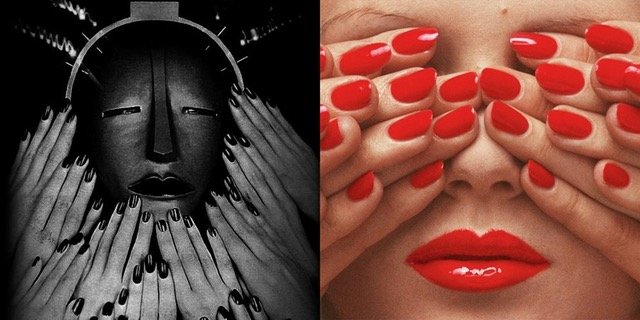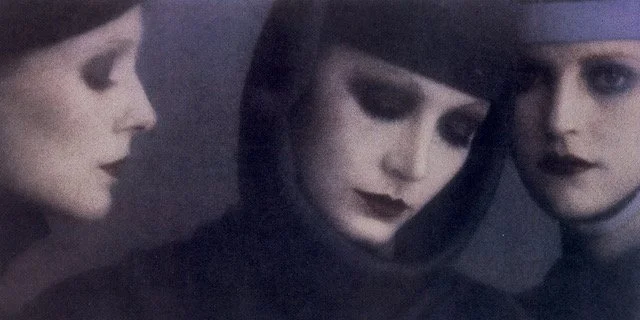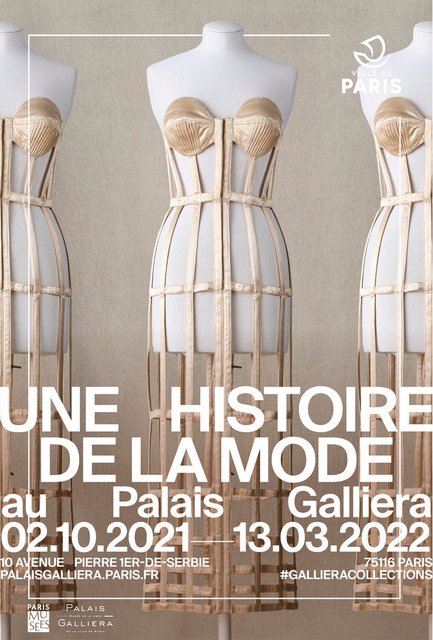Palais Gallliera
Vogue Paris 1920-2020, until January 31, 2022
A Story of Fashion, until June 26, 2022
I saw an exhibition at the Palais Galliera a week or so ago. I have written about this gorgeous palais here: The Duchess and her Palais. Concentrating, as I did at the time, when everything was mostly shut in Paris, on the woman who donated the palais to Paris but took the collection that it was supposed to house, back home with her to Italy. After a few years of renovation and a healthy dose of capitol from the House of Chanel, the palais is even prettier. (Figure 1) And the day I was there, the courtyard had become a dining terrace. (Figure 2) Here’s hoping that lasts.
The exhibition on now is Vogue Paris 1920-2020. A year late because of Covid. Did you know that Vogue Paris was the only Vogue that has the name of a city rather than a country? I say ‘was’ and not ‘is’ because the name was changed to Vogue France last month. And the first Vogue France was published this month. Talk about being up to date and all. Also, it is the oldest fashion magazine in continuous publication in France.
There was a grand exhibition about Harper’s Bazaar Magazine at the Musée des Arts Decoratifs a year or so ago which set the standard for exhibitions like this one. This one is more modest in scale yet includes all the things that need to be included, like photographs, playful and posed, of models and movie stars. And often beautiful, always thin, aristocratic women. While the focus is on photos, the story of Paris Vogue is also told through hand written documents and a documentary film. A half dozen or so outfits - haut couture and pret-a-porter - created in Paris that changed the course of fashion, are also on display. (Figure 3) Culture has played a part in the magazine since very early on, with articles on music and the theatre, cinema and literature, establishing what sort of readership the magazine courted. To prove that it was more than ‘eye candy’. This reminded me of Playboy insisting it was more than a girlie mag with pieces by such literary greats as Ian Fleming and Norman Mahler among others. Which others? Well Margaret Atwood and Ursula Le Guin for example.
Vogue Paris is associated with certain dress designers like Yves St. Laurent (Figure 4) and Karl Lagerfeld, (Figure 5) favored models like Kate Moss (Figure 6) and celebrated movie stars like Catherine Deneuve. (FIgure 7) There are a lot of magazine covers in this exhibition, (Figure 8) a few less than 1200 since the magazine published only sporadically during WWII.
Figure 4. Yves St. Laurent channeling Mondrian
Figure 5. Karl Lagerfeld and Vogue
Figure 6. Kate Moss on Vogue Paris
Figure 7. Catherine Deneuve for Vogue Paris
Figure 8. Vogue Paris covers over the years
I was delighted to come across iconic photos that I have seen in one exhibition or another recently - like Guy Bourdin’s fingernail homage to Man Ray. (Figures 9 & 10) And Sarah Moon’s photograph of three beauties. (Figure 11) New for me was Brigitte Lacombe’s photo of Mick Jagger in a form fitting dress, with partner Jerry Hall, whose dominance is confirmed by her masculine attire and her arm protectively wrapped around Mick. (Figure 12) Less surprising now perhaps than it would have been in 1992 when it was taken.
Figure 9. Guy Bourdin, Red Fingernail homage to Man Ray in Vogue Paris
Figure 10. Man Ray left, Guy Bourdin, right
Figure 11. Sarah Moon for Vogue Paris
Figure 12. Mick Jagger and Jerry Hall, Brigitte Lacombe, Vogue Paris
Downstairs there is an exhibition of the Palais’ permanent collection. It is really well done. It is really worth the trip. (Figure 13) If you are feeling tired after the Vogue exhibition, go to the cafe and relax. Then go downstairs when you are rested. The exhibition, “A History of Fashion. Collecting, exhibiting at the Palais Galliera,” traces the history of fashion and the Palais Galliera’s collections chronologically and thematically. From the 18th century to the present day. (Figure 14)Using nearly 350 pieces of clothing, accessories, graphic arts and photographs, all from the Galliera’s collection. Each chronological section considers specifics of a period, like 19th century prints, 1950s cocktail dresses and the 1980s minimalism of Japanese designers. The second half of the story is the history of collecting, of this collection. From its beginning in the 1920s with the first founding donation by the Society for the History of Costume to the most recent, from the Vogue Paris Foundation. Halfway through the exhibition’s run, the museum will have to close to change clothes. For preventative conservation. The fragile clothes and accessories can’t be on view for too long. So, it will be a chance to come back to see the same exhibition, but different, a second time.
Figure 13. Palais Galliera Permanent Collection
Figure 14. Palais Galliera Permanent Collection (changing exhibition)
Copyright © 2021 Beverly Held, Ph.D. All rights reserved
Dear Reader, I hope you enjoyed reading this article. Please click here or sign up below to receive more articles plus other original content from me, Dr. B. Merci!
And, if you enjoyed reading this review, please consider writing a comment. Thank you














